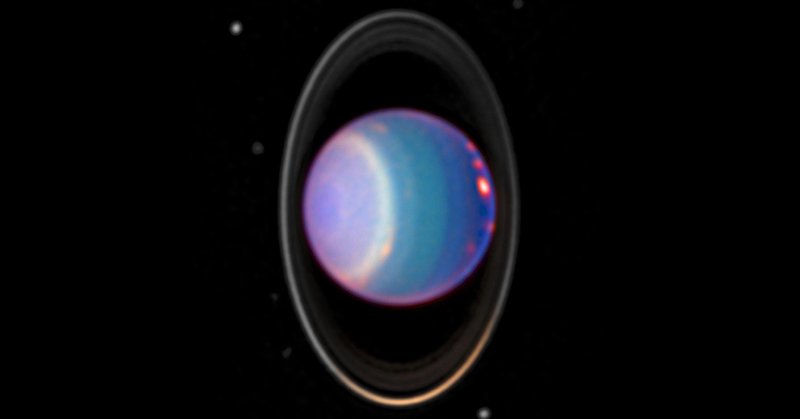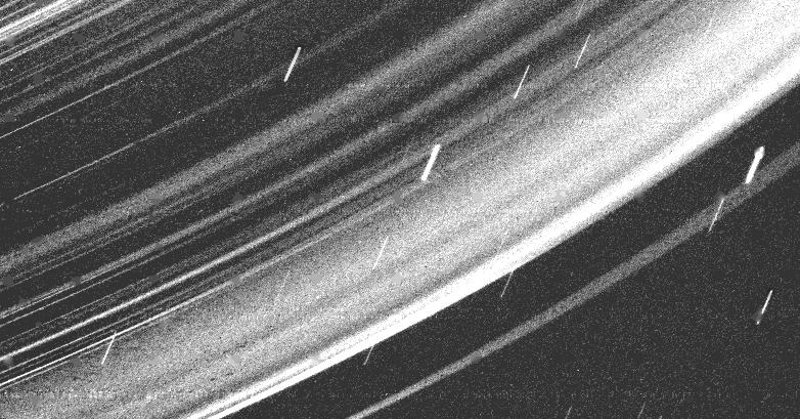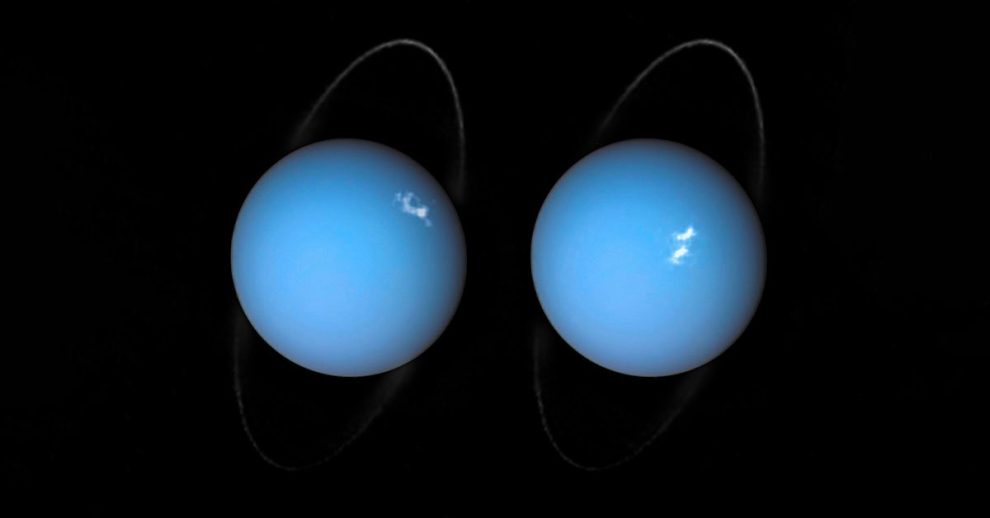Uranus, the seventh planet from the Sun, is an enigmatic world that has puzzled astronomers for centuries. With a diameter over four times that of Earth, Uranus is an ice giant known for its unusual features, such as its extreme axial tilt and unique color. Though it’s often overshadowed by its larger neighbors, Uranus holds many secrets waiting to be uncovered—from its icy rings to its mysterious moons. In this article, we’ll explore 20 fascinating facts about this distant planet that make it one of the most intriguing bodies in our solar system.
Uranus Discovered Before Antarctica

1. Astronomer William Herschel discovered the planet Uranus in 1781. That’s decades before explorers even discovered Antarctica (1821). Initially, Herschel named the planet “George” in honor of King George III, a name it retained for about 70 years. However, the astronomical community later overruled Herschel, officially naming the planet Uranus.
2. Uranus is unique among planets in our solar system, as it is named after a Greek god rather than a Roman one. Its Roman equivalent, Caelus, is the root for the word “celestial.” Interestingly, Uranus fits genealogically and in planetary order, being the great-grandfather of Ares (Mars), grandfather of Zeus (Jupiter), and father of Cronus (Saturn).
3. The element uranium derives its name from the planet Uranus, which is named after the Greek god Ouranos, the god of the sky. Mythologically, Ouranos was banished to the Earth by his son, Kronos. This ancient power of Ouranos finds a modern parallel in humankind’s unlocking of uranium’s potential.
4. William Herschel not only discovered Uranus and its moons Titania and Oberon but also identified Saturn’s moons Mimas and Enceladus. He pioneered the discovery of infrared radiation and also composed 24 symphonies in his lifetime. In gratitude for his discovery of Uranus, King George III awarded Herschel an annual stipend of £200, equivalent to £24,000 in 2019, on the condition that he relocate to Windsor for the Royal Family to use his telescopes.
5. Uranus had been observed and cataloged multiple times as far back as 128 BCE. However, due to its slow orbit and dim appearance, astronomers misclassified it as a star until 1781. The realization that Uranus was a planet doubled the known size of the solar system.
6. In 1986, the Voyager probe recorded a massive methane eruption from Uranus. Despite this, scientists classify Uranus as an ice giant, not a gas giant. Its atmosphere contains unique cloud structures primarily composed of methane, which absorbs red light and reflects blue, giving Uranus its striking cyan-blue color.
7. Uranus and Neptune are easily visible through binoculars, with Uranus sometimes appearing greenish due to methane in its atmosphere. Once a year, Uranus becomes just bright enough to be seen with the naked eye.
8. All 27 of Uranus’s moons are named after characters from William Shakespeare and Alexander Pope. Among these, five major moons-Miranda, Ariel, Umbriel, Titania, and Oberon-display diverse geological features such as canyons, ice cliffs, and signs of past geological activity.
9. Oberon, Uranus’s second-largest moon and the ninth largest in the solar system, is named after the fairy king in Shakespeare’s “A Midsummer Night’s Dream.” It features one of the tallest mountains in the solar system, potentially 11 km high, yet it remains unnamed. Some scientists speculate that beneath Oberon’s icy surface lies a subsurface ocean, possibly up to 40 km thick, warmed by internal tidal forces.
10. Uranus is encircled by 13 known rings, which are among the darkest in the solar system. Composed of ice and rock, these rings reflect only about 2% of incoming sunlight. Their narrow widths, ranging from 1 to 15 kilometers, suggest formation from shattered moon debris.
Voyager 2’s Historic Uranus Flyby

11. NASA’s Voyager 2 remains the only spacecraft to have visited Uranus, conducting a flyby in 1986. During this mission, Voyager 2 provided the first and only close-up images and data of the planet, its rings, and its moons.
12. The high concentration of hydrogen sulfide in Uranus’s atmosphere gives it an odor akin to rotten eggs. This gas, which is also responsible for the odor of farts on Earth, dominates the planet’s upper atmosphere.
13. Unlike other planets, Uranus has a highly tilted and offset magnetic field. This unusual configuration results in an asymmetric magnetosphere, with significant variations in magnetic field strength between the northern and southern hemispheres. As a result, the magnetic field “flickers” because it is so misaligned with the planet’s rotational axis that magnetic lines snap apart and reconnect during rotation. Although the magnetosphere can reach temperatures exceeding 1,000,000,000°C, the sparse particles mean you would freeze rather than burn. According to astronomers, “Uranus is a geometric mess.”
14. A massive impact, likely caused by a collision with an Earth-sized object early in the planet’s history, caused Uranus’s rotation axis to tilt nearly 100 degrees, making it almost horizontal. This event, which occurred around 4.5 billion years ago, resulted in Uranus “rolling” around the Sun like a marble, with an axial tilt of approximately 98 degrees. As a result, each pole experiences 42 years of light and 42 years of darkness during the summer and winter solstices due to this extreme tilt.
15. Uranus’s rings and moons are distinctively tilted at nearly the same angle as the planet’s axial tilt of 98 degrees. This alignment means they orbit in a plane nearly parallel to Uranus’s equator.
16. Uranus and Neptune likely switched places approximately 4 billion years ago due to gravitational interactions with other bodies in the early solar system.
17. On gaseous planets like Uranus and Neptune, it rains diamonds. The planets contain methane, which, under high pressures and temperatures, transforms into diamonds that fall toward the planet’s center.
18. Uranus holds the record for being the coldest planet in our solar system, with minimum temperatures plummeting to around 49 K (?224.2°C). This extreme coldness is partly due to its low internal heat compared to other giant planets.
19. Miranda, one of Uranus’s moons, features a cliff named Verona Rupes, estimated to be 20 km high. This cliff is the tallest known in the solar system. If you jumped off it, you would fall for about 12 minutes before reaching the ground, due to the moon’s lower gravity. Remarkably, the weak gravity means you could survive the fall without a parachute.
20. Among the 18 known types of ice crystal is Ice XVIII, or superionic ice. This form exists under extreme pressure and is black, very hot, and heavier than regular ice. Scientists believe it is the most abundant form of water in the universe and is found deep within icy planets like Uranus.












Add Comment